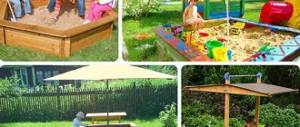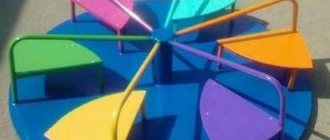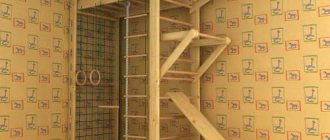Make a simulator at home according to drawings and diagrams
Any person who wants to create a perfect body cannot do without a gym or exercise equipment for home exercises, which, by the way, you can do yourself if you have drawings of exercise equipment and desire. Modern simulators are very expensive, but you can make them yourself. Of course, you won’t be able to make an ab rocket abdominal trainer the way it is in the original. After all, dozens of craftsmen, designers and doctors worked on it to make the best simulator.
Make a simulator at home according to drawings and diagrams
Let's look at how to create your own gym inexpensively for home workouts. To do this, you should consider some points. For example, some missing parts may have to be purchased.
However, there is also a positive side - if you wish, you can make inexpensive and high-quality sports equipment. So, in order to make a simulator with your own hands, the drawings of which can be found on the Internet, you should find the necessary equipment.
Starting to build a gym with your own hands
And we need to start by determining the place where our gym will be located. The room should be well ventilated and have as secure walls, floor and ceiling as possible. Because a strong girl attached to the simulator will inevitably try to destroy this simulator or at least tear it away from the place of attachment.
When the premises have been selected, it is time to plan the locations and desired types of sports equipment. As a rule, to make a gym in an apartment with your own hands, a standard set of exercise equipment is enough:
•
horizontal bar;
•
Swedish wall;
•
bench for swinging the press;
•
rings;
•
rope.
“Shock” training complements this list with various types of pears, bags and makivaras.
DIY Bubnovsky simulator
As you know, Bubnovsky’s multifunctional health simulator is designed specifically for working out the muscles of the spine and joints without the use of drugs. It activates the deep muscles of the spine, restoring previous activity. In addition, systematic training on it can eliminate muscle spasms, as well as reduce spinal hernia and even eliminate it over time.
DIY Bubnovsky simulator
It is noteworthy that during training the body assumes a suspended position. In this state, the load on the joints and muscle groups is relieved, and the body is completely relaxed. Due to this, the pain syndrome disappears.
You can purchase a Bubnovsky simulator on the official website or find drawings and make it yourself. It consists of 2 vertical frames, each with upper and lower blocks, as well as one stationary one, and ropes with loads pass through it. For support and fixation of the trainee to the frame, special handles (short and long) are made. You can perform various health-improving exercises on the simulator. In addition, it can be installed in the gym or at home.
MTB helps maintain a toned figure by working the main muscle groups of the body:
- abdominal and pectoral muscles.
- biceps, triceps, and deltoids.
- gluteal and thigh muscles.
Do-it-yourself installation of gym equipment
So, we have made the mounts, now let’s figure out how to use them to make a gym at home with your own hands.
The sequence of work is as follows:
•
We apply the fastening plate to the wall or ceiling and mark the installation locations for the anchors;
•
using a hammer drill we drill holes with a diameter of 10 and a depth of 100-120 mm;
•
insert the anchor so that the thread protrudes at least 20 mm;
•
put on the rubber gasket and metal fastening plate;
•
clamp the plate with nuts (use Grover washers or self-locking nuts with a plastic sleeve);
•
attach the desired sports equipment.
You can learn about fastening structures to walls from the material on fastening shelves. The general principles are similar.
DIY strength trainer
The sports equipment of any gym consists of a certain set of exercise machines aimed at developing certain muscle groups. Many drawings for self-assembly of strength training equipment are presented on various websites. Let's look at an example of how to make a bench press.
To make a bench frame, you need a metal strip 4 cm wide and 4 mm thick, as well as a 2 mm thick profile pipe and a 32 mm metal corner. As a rack, you can take a pipe measuring 40x40 to support the weight, as well as connectors measuring 30x30. For a bench you will need a pipe measuring 40x40, and for a seat with a back - a corner.
In addition, to assemble a sports simulator, you will need measuring devices, including tools for further metal processing. First, you should cut the profile frame, as well as the corner into pieces and drill all the necessary holes.
Having prepared all the necessary materials, you should proceed directly to assembling all the parts. Those connections that bear the main load during exercise must be welded. The remaining parts that serve as adjustment are connected to each other with bolts. After this, the structure is primed and painted.
DIY strength trainer
When starting the final assembly of the bench, you should prepare the load-bearing part of the backrest, as well as the seats, securing them to the frame of the bench. Take 2 USB panels, the thickness of which should be 2 cm, as well as foam rubber and leather substitute for upholstery.
Thus, making a sports trainer yourself is not as difficult as it seems at first glance. The main thing is to draw up the drawing diagram correctly.
I will try to restore here the entire history of the creation of this simulator. I implemented my idea slowly and by trial and error, because I had never done anything so complex on my own before. Therefore, if someone wants to repeat or make the same exercise machine at home, then this article should help him avoid the mistakes that I made. Along the way, I will mark important places so that you remember them especially and do not repeat my mistakes. Don't forget that I am sharing these tips and articles here with everyone for free. If you have anything to advise, then you are welcome. If you just want to get smart and flirt, then please move away from here and don’t show your stupidity. So, let's begin. You will need square pipe. I took 60 by 60 mm, but you can use both 40 mm and 50 mm. We cut two pieces of 1800 mm each. These will be vertical posts. We make another segment of 760 mm. This is the lower leg; the entire structure will stand on it.
The top bar should be curly. We cut 460 mm in length and make an oblique cut to make 425 mm.
The parts for the main rack are ready. Now we need guides along which the bar with the load will “walk”, as well as rollers along which the cable will roll. We make two sections of 250 mm each. The width of these sections may be even smaller than the main rack; I had the remains of the 30th pipe and used them. We also make a piece of pipe, preferably 40 by 40 mm and 225 mm long. We will insert a pipe for the load into it and it will be movable, that is, it will be the one that will “walk” along the guides. We also cut off the auxiliary “paw”, which will be attached behind all the structures to create a more durable installation on the surface. You can make it no less than a meter in length, and no less in width than the main rack, although it is possible to take a smaller size. The rollers along which the cable will “walk” are one of the important details, so now pay attention
: you can order rollers with bearings installed in them from some turner, or you can simply search on the “iron” market. The phrase “construction and installation block,” that is, a roller with a hook, can help you in your search. The picture below shows a lightweight version of such a block.
But you understand that to lift weights you will have to fork out 500 money and buy something more reliable. I didn’t find anything like this in tool and construction stores, but I did find a rather dubious plastic design and some pretty good rollers that can be made from wheelbarrow wheels if you remove the rubber from them. This is true, please note. By the time I found these things, I already had the rollers with bearings from a turner I knew, so in order not to throw away well-made parts, I decided to modify them after all. Moreover, they were made precisely in such a way as to withstand serious loads. I took a couple of metal plates (for one roller), drilled holes in them, inserted a bolt ordered from the same turner into the roller and these plates, and then carefully welded it all together. It turned out scary, but it holds up fine. DON'T REPEAT MY MISTAKES: buy a ready-made block, it will be better and you will spend less nerves! After that, I made some markings and welded my blocks to the top bar of the machine. It turned out very scary!
I won’t say the dimensions and where exactly to weld, because I can’t know exactly what kind of blocks you will get or make, here the fitting is individual, so everything is in your hands. A block welded to the inclined part of the top bar directs the cable directly to the horizontal bar, which you will hold on to when lifting weights. The one in the middle stabilizes and guides the cable to the reinforced load. A hole is drilled under it, in which the cable should move, but not touch the sharp edges. Of course, despite the correctness and numerous calculations, I didn’t get it perfect, and during test assemblies of the simulator, the cable began to touch the edges of the hole, after which I simply welded a larger hole...
DON'T REPEAT MY MISTAKES! It’s best if you take even more measurements, and instead of the usual hole in the pipe, place a neat sleeve there, where the cable will feel more comfortable and, most importantly, correctly! We put it on, we join it, we grab it...
After welding and tacking, you can check how the bar with the load “walks” along the guides.
Let's take a closer look at what we did. 1800 - main racks. 250 - guide holders welded to them (as guides I took a rod 18 mm in diameter and cut it 970 mm in length. 225 - a bar with a hole made (the arrow points to it) for the pipe on which the main load will be hung. This bar also contains There is a vertical hole 12 mm in diameter, into which a 12 mm bolt is inserted with the head down and secured on top with an eye nut and locked in the usual way for reliability.
Cable 6 mm in diameter braided through thimble...
...passes through this nut and is secured with two clamps also for a more secure connection
If you believe the seller in the store, then such a cable can withstand 180 kg, and the carabiner will not let you down, because I have seen exactly these carabiners in several gyms. True, I hastened to talk about the carbine, but since I already said it, I’ll note that it is on it that the load will be hung.
In the middle short bar (250 mm), where the cable will pass immediately after the movable one (that is, this bar is the second from the top in our design), a hole should also be made... sorry, a hole, but I made a mistake here too, so I had to burn it.
...and above too...
However, when you have everything set up and checked, these terrible, dare I say it, holes - you can beautifully seal them with washers and scald them to a glamorous look! In theory, everything is ready, all that remains is to make it beautiful and convenient in the form of a cable stop. Some wood from old furniture fit just right. The freshly brewed horizontal bar also turned out to be perfectly balanced.
Now let's paint our simulator. We insulate the cable with torn magazines and paint it on all sides for several days.
But one problem remains. There is a slight noise from the movement of the plank with a load of pores on the guides, which, of course, do not need to be painted. And there is no need to pour oil on them either, because we can move and disassemble the simulator, and getting our hands dirty in oil is not part of our plans. We cut out a couple of pieces of lemonade bottles, roll them into tubes, insert them into the holes in the guides and cut them lengthwise so that they rest against the bar, do not let them slide off either up or down. And there is no noise!
Well, the leg to which the exercise machine is attached for greater stability is screwed to it with 12 mm bolts and powerful furniture corners are welded to the main stand.
This is what the whole structure looks like. Works! No noise! It can be easily disassembled using one 19mm wrench.
You can make the simulator COMPLETELY dismountable, you just need more precise calculations and all sorts of bolts and nuts, as well as some plates so that these bolts and nuts make your simulator non-creaking and strong. It’s faster and more convenient to cook, I’ll tell you, however, not every room will be able to cook a fool of a couple of tens of kilograms, so the choice is yours! Best regards, Sergey Pirog
. Online writer, music video director, and now creator of sports equipment.
PirogSV
Author
Sergey Pirog
Incorrect order of tabs
You do not have sufficient rights to add comments. You need to register on the site.
| For bench, incline and squat presses > |
“Rule” simulator and drawings for self-assembly
One of the ancient simulators is usually a simulator that is still actively used by many athletes, so if you have a drawing you can easily make it yourself. For manufacturing, you should adhere to only one rule - the angle between the legs and arms should be about 90 o.
“Rule” simulator and drawings for self-assembly
To begin work, the following materials are required: cable, grips, winch, block rollers. All these parts can be secured in different ways in the yard on special posts or even in the walls of the room. You can take this exercise machine with you on a trip to nature or practice at home.
To make the simulators yourself, you will need drawings, but this simulator is easy to manufacture. When purchasing block videos, you should pay attention to their quality. They must be reliable and mobile, which is especially important when making turns during exercise. The cable is necessary for uniform load distribution and therefore must be metal.
Make your own stairs
Thus, you can make simple-to-use simulators or find them on various forums in the do-it-yourself section, drawings of which are presented on their pages. At first glance, it seems that the exercise machine is usually only able to strengthen the tendons and core muscles. However, this is only one of its main qualities. It also improves the performance of internal organs, the musculoskeletal system, and restores strength.
Drawings of a strength trainer
Where to buy a massage roller and how to choose
First of all, you need to decide what type of video clip you should buy. You probably noticed that they are seriously different in appearance. So, there are two types of massage rollers.
One piece foam roller
A solid or solid foam roller is a cylindrical block without through holes. This roller is made of polyethylene foam, it is soft enough for massage, but strong enough to withstand body pressure. This type of massage roller produces a more moderate effect on the human body compared to a textured one. Suitable for those who are sensitive to pain, have sensitive skin or who want a gentler massage.
Massage roller with textured surface
This foam roller has a textured surface and, as a rule, a hollow (through) core. Typically, this type of roller is more expensive compared to a solid one, but it also massages the body more strongly. The surface of the roller can be smoother (small protrusions in the shape of fingers and palms) or harder (protrusions in the form of spikes). Typically, the outer part of such a foam roller is made of EVA foam material, and the inner tube is made of high-strength plastic. A massage roller with a textured surface is suitable for those who want a stronger massage and a more intense effect on the fascia.
What roller size should I choose? The diameter of the rollers is usually standard: 12-15 cm, you don’t have to rely on this unit of size. But it’s worth thinking about the length of the roller. Massage rollers are usually found in the following sizes: 30 cm, 45 cm, 60 cm, 90 cm. The longer the roller, the higher its cost. Most practitioners claim that it is more convenient to train with a small roller of 30-45 cm, but some, on the contrary, prefer longer options.
- Choose a long roller (45-90 cm) if you want to use it effectively on your back. Firstly, on a short roller it is inconvenient to roll the roller under your back. Secondly, a long roller can be placed parallel to the spine. This is an excellent spinal massage. But a long roller (especially 90 cm) may be inconvenient for other exercises.
- Choose a short roller (30-45 cm) if you are looking for compact equipment that is convenient to take with you. A short video is cheaper, so you can take it “for testing” if you are not yet sure that you will constantly engage in massage. A 30 cm roller is not recommended for people with large backs or legs; it will be uncomfortable.
A selection of the best massage rollers on Aliexpress
Foam rollers are very inexpensive equipment available to almost everyone. A large selection of rollers is offered on Aliexpress. We have selected the most popular massage parlors on Aliexpress with a high average rating and positive reviews. All videos are sold at low prices (from 400 to 2000 rubles). The description indicates the size of the roller (length x diameter). Before purchasing, be sure to read reviews of the product and read the description of the massage roller from the seller. We try to update prices, but since sellers often change the price of goods, the numbers in our description may differ from the numbers in the store.
Solid (solid) massage rollers
The simplest foam roller, short in length. Size: 30 cm x 15 cm. Available in 3 colors: black, blue, lilac. Reviews are generally positive, with some buyers noting an unpleasant odor and insufficient packaging, which can cause the product to be defective during delivery. Cost 450 rubles.
Transition device
A crossover (from the English crossover, transitional or boundary device) is a multifunctional simulator with cargo blocks.
It is designed for different muscle groups. Crossovers come in different types: power, corner, for professionals, for amateurs, with an adjustable horizontal bar, etc.
The simulator has cargo traction blocks - upper and lower, their height is adjustable. Trainers believe that a crossover is a good strength training device that can replace simpler sports equipment.
Using a crossover, you can work the muscles of the back, shoulder girdle, arms, legs, chest and buttocks.
What is it needed for
It is appropriate to purchase a crossover only for gyms. It is unlikely to be suitable for home (it is quite bulky).
Of course, if your living space allows it, then you can buy this exercise machine. In any case, it is a useful unit for muscles.
Men like to use the crossover to give their muscles a clear definition. It is also held in high esteem by women: the lower block of the simulator works the muscles of the legs and buttocks.
How to use
Next we will talk about the basic and most popular exercises on this simulator.
Exercises for the shoulder girdle
Do you agree that the importance of the shoulder girdle is quite difficult to overestimate? For the stronger half of humanity, pumped shoulders are needed to give a silhouette to the upper body.
For women, shoulders emphasize the femininity of the figure, helping to create the illusion of a thin waist.
It is necessary to take the handles of the simulator in both hands and move away a short distance (where the crossover resistance begins). We raise our hands in front of us.
We hold them straight, parallel to the floor and perpendicular to the body. Feet should be placed shoulder-width apart and pressed firmly to the floor.
We take a breath, begin to spread our arms to the sides and back. While moving, keep your arms extended and parallel to the floor.
Then we continue moving in the opposite direction. Our hands do not touch each other at the end.
We take the handle of the simulator in one hand and move away a short distance. The arm is slightly bent at the elbow joint. We press our feet tightly to the floor, placing them shoulder-width apart.
We take a breath and stretch our hand to the side. The elbow is directed slightly back and up. We try to keep our shoulder straight, and don’t move it or raise it anywhere.
This video shows how to do the exercise correctly.
- Swing your arms backwards while bending over
We stand in the middle of the simulator. We take the crossover handles in both hands. We place our feet shoulder-width apart. We bend the lower back - bend forward. We bend our elbows slightly.
Let's start working with our hands. We try not to jerk our shoulder blades. Keep your back in place. Elbows at the top should point to the ceiling.
You can view this exercise here:
Exercises for the pectoral muscles
- Crossover (or crossover)
This is the most popular exercise. It is named after the simulator. There are many options for performing exercises.
Can be done with both large and small weights; both with two hands and alternately; both standing and lying down.
We take the handles of the simulator in our hands. Feet - shoulder width apart.
We begin to bring our arms down and then raise them up, while spreading them at shoulder level. Below we linger for a few seconds. Then we slowly rise up.
It is important to monitor your body position. The body should be straight, the elbows should not bend at right angles.
The technique and all the nuances can be seen in this video:
It is necessary to move the bench with an adjustable tilt angle of 30-35 degrees. This will work the middle of the pectoral muscles. This exercise is similar to lying down with dumbbells.
More details here:
Leg exercises
- Leg abduction in crossover
You need to go to the lower block of the simulator and set the required weight. We stand sideways to the simulator. We put the cuff on the ankle.
We put our feet together. Transfer your body weight to your free leg. We tear the other leg off the floor.
Let's take a deep breath. We move the leg with the cuff to the side. Slowly return the leg to the machine, slightly crossing it with the other leg. We do the same with the other leg.
This is a classic exercise. In fact, there are many variations of this exercise. It can be performed lying on a bench, on all fours, facing and back to the crossover, etc.
What to remember
The crossover is an almost universal exercise machine (for men and women), with which you can work out most of the muscles in our body.
This simulator does not affect the growth of muscle mass. On the contrary, it only forms the muscle.
Using a crossover, you can perform various variations of exercises for a particular muscle group.
It is important to perform the exercises efficiently, having first carefully studied the information about them or take the advice of a trainer.
This is where I end. See you again on the expanses of my blog!
Crossover trainer. Exercises. How to choose and features
A beautiful body is the dream of many people. But what to do if you don’t have enough time to visit the gym? The answer is simple - arrange it at home. But at home, as a rule, there is not enough space to install several devices. Therefore, you should opt for multifunctional devices, one of which is a crossover simulator.
What is a crossover trainer
Externally, this device is unremarkable. This device consists of two racks (block frame) with special cables and a crossbar. The block frame is equipped with traction blocks, the weight of which can be adjusted. Using handles, cables and rollers, the blocks move in the frame along a certain trajectory, while the athlete can pull them in different directions. This makes it possible to correct the muscle relief, build muscle, pumping up the body with the help of pulling blocks at the required angle.
The load is selected depending on the athlete's level of training and can range from the minimum values used during warm-up or rehabilitation to the very significant weight required by professional weightlifters. Thus, the crossover simulator is universal not only in terms of the variety of exercises. It is suitable for both beginners and experienced athletes.
The working weight in the device changes by moving the lever that fixes the blocks. The crossover trainer is a strength device. The result is achieved through the efforts of the athlete. The very name “cross over” literally means “through everything”.
This simulator allows you to train your arms, shoulder girdle, hips, buttocks, abs, back and pectoral muscles. Just one device can replace an entire gym. At the same time, the device does not take up much space, and the design is adjustable, thanks to which each athlete can create an individual training program for himself.
The effectiveness of the exercises is not inferior to training with a regular barbell, but significantly exceeds them in terms of safety. There is no risk of losing orientation in space, dropping the projectile on your leg or injuring your back. The effect will be noticeable after a couple of weeks of effort, subject to regular exercise.
The advantages of this device include:
- Balance. When exercising with free weights, the athlete has no support. When exercising with this machine, the athlete has support that will prevent him from bending forward while performing the exercises.
- Diversity. The crossover trainer will never make an athlete get bored during training. There are an unimaginable variety of exercises that can be performed on this device. Even the same exercise can be done in several variations. You can attach various handles to the device, which will allow you to work all muscle groups of the body. Straight bars, curved handles, and rope are used as additional devices. All this is added with the aim of diversifying the training program, improving the effect of the exercises and, of course, making the exercises as convenient as possible.
- Rehabilitation. The crossover trainer is great for people who have recently been injured. It allows you to qualitatively develop your knees, arms, back and other parts of the body.
Features of training
Crossover training requires a lot of energy and maximum focus. Therefore, you should exercise on the simulator immediately after warming up. Loads are pulled using the arms or legs in the direction specified by the training program. In this case, lifting weights can be carried out with one limb.
The crossover trainer allows you to perform exercises such as:
- Raising hands. By the way, this exercise gave the device its name – crossover.
- Chest press from different angles.
- Various types of pulls - horizontal, vertical and cross.
- Bending your arms in different positions - standing, sitting or lying down.
- Squats and lunges.
- Swing your legs.
- Twisting.
The technique of using the simulator is simple. Before class, you need to select a working weight and take the starting position. When performing any exercise, the back should remain straight, moving the handle in any direction is done while exhaling.
The effectiveness of exercise depends not only on the intensity of training, but also on the correctness of the exercises. In this case, the intensity of exercise can be changed in two ways - by adjusting the weight of the loads or the number of repetitions of one exercise.
When building a training program, it is important to correctly formulate the load. You should not work on all muscles at the same time, as this will lead to overload of the body. It is recommended to divide the program into two stages - for the upper and lower parts of the body, and work on them every other day.
Exercises
As mentioned above, the crossover simulator is a universal device on which you can successfully work out the muscles of the upper and lower body.
Training the bottom
The lower body includes the buttocks and legs. To form a beautiful rounded buttock shape, you can perform exercises such as:
- Deadlift with load from the lower block.
- Squats from the lower block. This exercise is good because the maximum load is placed on the gluteal muscles, and as a bonus, on the back of the thighs. In this case, the abdominal and back muscles are involved in the work, but there is practically no load on the knees.
Types of designs and their features
Bench-type machines come in the following varieties:
- A horizontal bench (folding or regular) is a stationary type of sports equipment. Most often, this design is characterized by inclusions in the form of:
- Rack for shells,
- Set-top boxes;
- Retainers.
- The bench plus parallel bars allows you to perform a greater number of exercises. It is desirable that there be 110 centimeters between the racks.
- Exercise bench with adjustable seat and backrest. This type of simulator has:
- Spring bracket;
- Hinged stands;
- Fasteners;
- Stopper;
- Stopper chain.
The design can be adjusted depending on the level of inclination of the bench.
With the help of this simulator, the user will be able to use a barbell, dumbbells, and also take a sitting position in training.
Using this simulator, you will be able to:
- Perform bench presses at different angles;
- Adjust the load;
- Comprehensively pump a large number of muscle groups;
- Install a bench for training at home, with the possibility of subsequent folding.
It is possible to exercise with a barbell in a sitting or lying position, or use other sports equipment.









